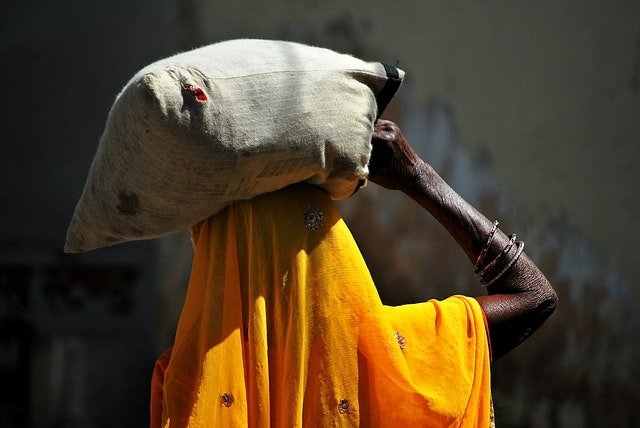“Beep Beep” goes the car horn. The tractor with its two trailers is going slow and steady. It’s harvest season. Sugarcane being transported to the crushing factories. A rather small cloth with a reflecting cross is hung at the end of the 2nd trailer. That’s the safest feature that you see on an overloaded trailer and tractor with extra passengers.
Nishant adds “It’s been declared as a wet drought in this belt” as we wait it out in one of the bylanes of a village in the Sangli District.
“What may be the gross income of these farmers?” he quizzed further.
Let’s systematically understand – How does an average (above average) farmer in a Green Belt in Maharashtra look like?
Tractor: Mahindra, John Deere and Sonalika are some of the better known brands. A decent sized tractor will cost upwards of 5 lacs. A good one with higher HP will be in the range of 7 lacs. Majority of farmer owners will take the tractor on lease. Around INR 2,000/- per acre. A farmer who is buying a tractor solo has a capacity to do a Capex of 7 Lacs. Even if it’s on an EMI, it’s definitely indicative of higher spending power. Plus, any farmer will need to own some accessories – ploughing, rotator, seeding etc.
Irrigation: Finolex, Jain Irrigation, Kothari are some of the more known brands here. Irrigation can be by canal waters, drip or groundwater. All of them require electricity and some equipment. Per acre price of drip irrigation can be around INR 50,000/- per acre. Operational maintenance also comes into play for irrigation schemes. There are subsidies from the government. However, investing in getting your land parcel irrigated calls for an entrepreneurial streak from within.
Cash Crops: Any Wikipedia article will do complete justice to what are cash crops and more. Simply put, these are crops where you get pre defined market value with reasonable settlement time frame. Further, the demand for these crops is perennial. I don’t pretend to have an authentic definition, but in sum and substance these are the ones that get consistent moolah. Some well known cash crops – sugarcane, tobacco, cotton, jute, oilseeds and more.
Water: In ancient times, civilizations thrived near the river. Modern trade and commerce shifted that dynamic to civilizations thriving near National Highways and Railways. Water bodies like canals, lakes, rivers are major assets. If you have a river close by you are blessed. Dams multiply that blessing. Rainfall plays a major role. Too little and we have a problem – Too much we – and we also have a problem. The term “wet drought” aptly captures the sentiment. Extent of Wet Drought impacts the drop in yield.
Electricity: Electrification has reached the remote pockets but the supply may be choppy. Load shedding is a common given in these areas. The crops need to be fed only at intervals – so even a choppy feed is perfect.
Connectivity to APMC or Factory: Farmers with Cash crops are super aware of where to channelize the produce, what kind of rates to expect. They are able to subtly grade the produce in various qualities. These are avenues for monetization. Various schemes ensure “cash-in-hand” in some meaningful timelines.
Weather sensitivity: Mango is a very moody fruit. Too cold; too hot and the flowering of the tree is impacted. Water stays in the roots of Sugarcane for more than 7 days and crop rots. Weather plays up in various ways to impact the yield. I am not sure what the farmers can do to hedge the impact.
Let’s do some maths – This is from Sugarcane Belt. Green Belt. Irrigated. Water Rich. Mechanized.
1 Ton of Sugar Cane trades between 2500 – 3200 depending on the quality
Normal Farmer produces 40 – 60 Tons per acre
Suppose a Farmer has 13 Acre of land parcel.
- 8 Acres is for Sugarcane
- 3 Acres is Near the River – Hence, used only for grass
- 1 Acre is for livestock and hours
- 2 Acres is for other vegetables/ fruits/ pulses
Children of these Farmers and Labourers are in Engineering, Pharmacy and Medical Colleges.
Houses: A typical farmer stays in a “pukka” construction house. These are RCC constructions. Ground + 1 bungalow styled.
Car: Many of them have Cars. Children have bikes. Bikes are swanky modern ones. KTM 390 types.
The objective here is to debunk myths that majority of city slickers have –
- Farmer is Poor – Nopes – Farmers do NOT necessarily mean POOR people. They are self respecting, high self esteem and educated people. Educated in scholastic and worldly ways.
- People in villages are poor – Nopes. They are leading meaningful lives. Happier lives. Safer lives. Means of Income may be limited. But people are NOT starving, unhygienic or anything thereof. Urban sensibilities classify something as good or bad. But honestly, they people are living well.
Photo by marcos quinteiro from Pexels



